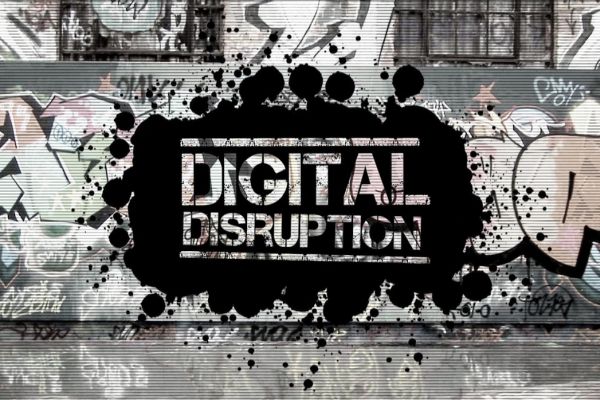Published on the 05/02/2015 | Written by Clare Coulson

New technology and globalisation are testing many industries. We explore what digital disruption means, and find an early responder who offers advice to see off the MOOCs in your industry…
The concept of digital disruption has been bandied about for several years. In 2012, Deloitte released its ‘Digital disruption: Short fuse, big bang?’ paper in which it posited that two thirds of the Australian economy would see significant disruption over the coming five years as digital technologies render traditional business models outmoded and inefficient. Eighteen months later it revisited its report to confirm its predictions and comment that in the industries that were most affected by digital disruption, the gap between digital front runners and laggards continued to grow.
IBM’s 2013 global survey of more than 4000 C-suite executives reinforced the conclusions showing that CEOs now think that technology will be the most important external force shaping the future of their enterprises. Just 10 years ago it was ranked in sixth place. CIOs in the same survey said that they expect the IT function to play a bigger part in enabling the enterprise vision, with mobility solutions, business analytics, cloud computing, collaboration software (both internal and external) and business process management featuring as the key areas of investment over the next few years.
In 2015 the rattling of cages is getting louder on the streets, most notably with Uber redefining the what was once known as the taxi industry (now the personal driver industry), but it is only one example of many chipping away at industry fortresses.
The proliferation of the ‘internet of things’ last year both broadened and deepened technology’s disruptive abilities. With sensors and gadgets that do all manner of things, technology has been re-writing the business model book and organisations that have adopted a forward-thinking technology stance have become a tangible threat to more traditional businesses.
Many organisations, large and small, both public and private, understand the opportunities of digital, but find the process of integrating platforms, people, and planning a continual challenge. The topic is such that research organisation IQPC has dedicated an event to the topic called Digital Disruption X. The event hits Sydney in March aiming to help attendees recognise and respond to the disruptive influences in their industry. One participant at the event who is actively responding is Sanjay Kalra, chief information officer at the University of Newcastle. He had this to say about the university’s decision to counter disruption with mobile solutions:
“One of the fundamental steps businesses need to take in order to deal with disruption is to understand who their customer is, and the expectations their customers have about the products or services provided.
“In the higher education sector, our customers go beyond students. While students are by far the largest portion, our customers are also made up of university staff and employees, as well as external stakeholders, the community and other universities.
“Over the last couple of years we’ve seen the concept of the traditional customer replaced with the emergence of the digital customer, who has a completely different mode of seeking information. The way they interact, consume content and share feedback is very dissimilar in comparison to the traditional customer of the past.
“One of the defining features of the digital customer is their expectation of an immediate response, which is a unique characteristic. Technology has been the biggest enabler of this, but we’re finding that while the digital customer may not directly ask for a response, they expect it regardless.
“For example, if a customer posts a question online via a social platform, there is an underlying expectation that the answer is already available or will be readily available to them fairly quickly. It’s this immediacy which is a defining trend for the digital customer and it’s really changing the way we do business at the University of Newcastle.
“The biggest part of our strategy in engaging with the digital customer has been going mobile. Digital disruption has forced universities to question whether or not they really are ready for a totally mobile experience which students now expect.”
Below are four key areas the University of Newcastle has considered when going mobile to enhance customer engagement:
1. Have a BYOD strategy
Students are already bringing in their own devices and consuming content online. They expect wi-fi on demand everywhere – on campus, at home and even in student accommodation. As a result, everything needs to be mobile. From the lecture theatre content, right through to the course content. It needs to be tailored for mobile interaction.
There are fundamental differences in the ways that students consume the content and their expectations around the types of devices they use at various parts on their journey with us. From a technology point of view, we’ve been constantly challenged and our customers are potentially a step or two ahead of us in most instances due to rapid advancing of technology. Our response has been to use technology to find the right solution to meet our students’ expectations via mobile or multi-device platforms.
It does change the way traditional IT behaves – we used to talk to the customers, find the requirements, write the requirements and then slowly develop something. This approach is undergoing a rapid change because students aren’t ready for that traditional interaction and the slow-paced response. Customers’ expectations are changing rapidly and therefore our developments and solutions need to change and develop rapidly as well.
2. Make content mobile friendly
When it comes to mobile strategy, content creation is our biggest challenge. Creating mobile apps has been somewhat easier, because we can whip up an app and connect it fairly easily to our back-end systems. But if you look at the university as a teaching or a research institution, the content is still largely in traditional formats of books or lectures. Recreating this to be mobile friendly is not just an IT task, it involves all other sections of the university gearing up for the challenge and speeding up their response in a new environment.
Ultimately, we have become facilitators of this response to disruption, because in many cases, the technology may be the platform, but it is the people who provide the solution. We have found it is about having a cohesive engagement plan amongst staff – the IT team and the academics – to get the mix right.
The IT team provides the platforms and the underlying technologies, but it is the academics and researchers who might need to provide more information directly relating to the content in order to make it mobile friendly. While this has been a big challenge for our university, we’ve found internal engagement and inter-departmental teamwork is fundamental on our journey towards mobile.
3. Seek customer feedback
We regularly poll and seek feedback from our customers, both students and non-students, to get an understanding of the effectiveness of mobile content and the technologies we provide. This gives us an idea of whether or not we are meeting their expectations in terms of flexibility, speed and universal access.
There’s a variety of methods we’re using, including online channels (such as surveys) and face-to-face feedback, which we seek fairly regularly. Most of the time when it comes to digital engagement, we have found we hear feedback very quickly in real time. In a campus environment it’s fairly easy to evaluate the effectiveness of the solutions we’re providing due to the immediacy of students.
Seeking customer feedback is a cornerstone of any digital strategy – you can’t improve the services or solutions you’re providing if you’re unsure it’s actually making your customers happy, and meeting their expectations.
4. Be prepared for the unknown
Digital disruption has proven that anything can come along and change the way your business works. While we’re using mobile to essentially ‘disrupt’ our own business, we’re also aware that other digital technologies can change the way we work in an instant and we need to be prepared.
Looking towards the future, the combination of mobile and online and the flexibility associated with the virtual environment, which enables students to consume content without being on campus, is really going to change the way we work and the solutions we provide.
At the moment, students come to campus not just to study, but for group and social interactions as well. From a teaching and learning perspective, however, a lot of the content and interaction is starting to become available to students off-campus as well through online channels – for example MOOCs (massive open online courses), or private course content, which are purely available online.
There is a whole a range of new platforms for learning available which are going to take-off in the future and we need to be ready for that in order to keep and engage students. It’s quite a dynamic industry and it’s a rich and fertile ground for new business models to emerge, as long as universities are prepared for these new trends in the future.



























